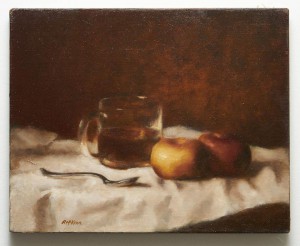
Ryan MacKean is an emerging artist, working and living in Toronto, who is using the old master techniques similar to the artists who worked in Europe from the 14th to the 19th centuries. “I always inspired by the works of Rembrandt, Chardin and Turner, among others, always leaning toward representational artists. What impressed me was their ability to draw, create a sense of light, mood and space, and how this was captured in layers of paint. I recall looking at an eye by Rembrandt for hours, so captivated by the abstract design. That this could be achieved with paint was incredible, so off I went to learn…becoming very humbled in the process! As a teacher of mine once said, “learning to draw is a lifetime endeavor.”
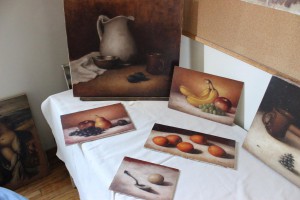
“After graduating from OCAD I studied at a traditional studio in Toronto to focus on drawing, composition and historical painting methods. Over the years I’ve spent a lot of time looking at art, making copies, drawing and painting plaster casts, returning to a portrait or still life, problem solving and applying what I’ve learned to my own work. This really hasn’t changed much over the years, and my work today is still very informed by the artists of the past. I see my work evolving along these same lines, developing out of practice and experience, applied to still life, landscape or the portrait. There’s just so much to learn, which makes the process so rewarding. ”
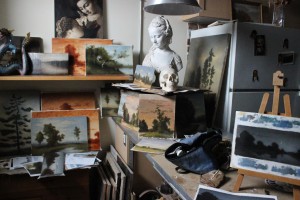
A few thoughts on Still Life…
When I first started to paint, setting up objects to study was the obvious and natural choice. Models are easy to come by; it’s a great way to study the elements of painting such as value, form and colour; it’s an opportunity to learn about composition, arranging and harmonizing multiple objects in space; and it’s a means of understanding light and texture and how these qualities translate into a medium like oil paint. There is something very direct about still life and over the years I’ve returned to simple objects like fruit and tableware, finding in them infinite variety, possibility and challenge.
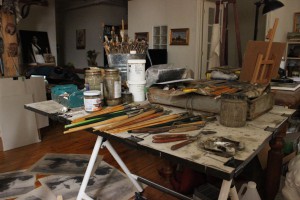
Oils have such a range of tactile, expressive possibilities—signals that capture ideas, such as liquid through glass, the skin of an apple, or a mysterious background. Each painting is an exploration of paint application as it relates to subject matter. Working with familiar objects, I’m trying to get beyond the mere depiction of “things” in search of more abstract qualities like texture, light, composition and mood. My aim is to avoid being overly literal while creating an underlying sense of harmony and order in my work.
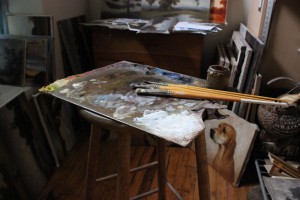
I focus a lot of time on process and the layering of paint-even the smaller still life can take multiple painting sessions to complete. Typically I begin with a wash drawing in oil to establish a pattern of light and dark. I’ll then block in a layer of colour, but thinking more about value as it relates to form. Subsequent layers continue to build and develop the forms until I’ve reached a level of refinement that I’m happy with. Throughout this process I’m really preoccupied with the “construction” of the painting, not simply what lies on the surface. While there is work and effort in their making, I look back and remember how much I’ve simply enjoyed developing each piece – I hope this is captured at least to some extent in the paintings.
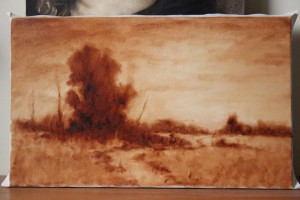
Landscape…
My latest work is a series of landscapes of the countryside surrounding Toronto. Looking for some variety to my current work and practice I decided to adopt a portable “studio” and paint landscapes outdoors. Working en plein air creates unique challenges that differ significantly from painting in the comfort of the studio: shifting light and colour; fleeting effects of atmosphere and key; the diversity of composition; contending with the elements; all require a need for focus, selection and confidence in order to capture a particular motif in a short window of time. What I appreciate with this approach is the freedom of expression and exploration. Larger paintings are often built up in several layers over a longer period of time. This can inhibit the need to experiment and take risks when there’s so much time and effort at stake. With the sketches, however, nothing is precious and spontaneity only adds to their expressive potential. Without pushing for any particular look or “style”, what I’m after is a sense of immediacy and familiarity—the experience of time, atmosphere and place.
These aspects became all the more relevant, realizing that many of the fields and forests where I was painting were being cleared for development. It’s a painful thing to see, trees vanishing and giant box warehouses taking their place—and yet I can’t help but consider with some understanding that every generation must regret the loss of ‘what was’ as we make room for ‘the new’. Plein air sketches were traditionally thought of as ‘souvenirs’, reminders of a distant time or place—now capturing a closer space yet lost or under threat of urban sprawl.
To see more of Ryan’s work please visit his website - http://www.ryanmckean.com.
